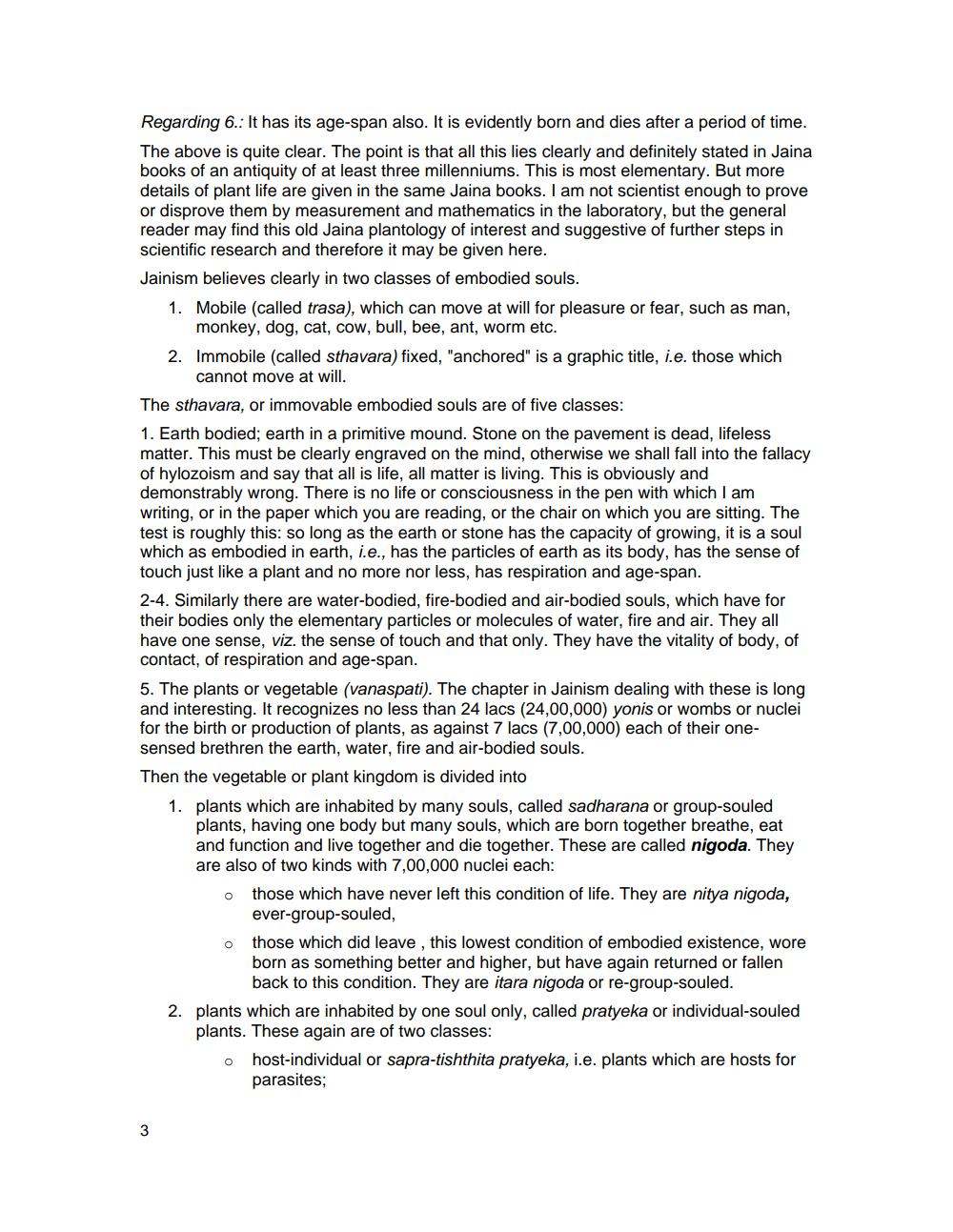________________
Regarding 6.: It has its age-span also. It is evidently born and dies after a period of time. The above is quite clear. The point is that all this lies clearly and definitely stated in Jaina books of an antiquity of at least three millenniums. This is most elementary. But more details of plant life are given in the same Jaina books. I am not scientist enough to prove or disprove them by measurement and mathematics in the laboratory, but the general reader may find this old Jaina plantology of interest and suggestive of further steps in scientific research and therefore it may be given here. Jainism believes clearly in two classes of embodied souls. 1. Mobile (called trasa), which can move at will for pleasure or fear, such as man,
monkey, dog, cat, cow, bull, bee, ant, worm etc. 2. Immobile (called sthavara) fixed, "anchored" is a graphic title, i.e. those which
cannot move at will. The sthavara, or immovable embodied souls are of five classes: 1. Earth bodied; earth in a primitive mound. Stone on the pavement is dead, lifeless matter. This must be clearly engraved on the mind, otherwise we shall fall into the fallacy of hylozoism and say that all is life, all matter is living. This is obviously and demonstrably wrong. There is no life or consciousness in the pen with which I am writing, or in the paper which you are reading, or the chair on which you are sitting. The test is roughly this: so long as the earth or stone has the capacity of growing, it is a soul which as embodied in earth, i.e., has the particles of earth as its body, has the sense of touch just like a plant and no more nor less, has respiration and age-span. 2-4. Similarly there are water-bodied, fire-bodied and air-bodied souls, which have for their bodies only the elementary particles or molecules of water, fire and air. They all have one sense, viz. the sense of touch and that only. They have the vitality of body, of contact, of respiration and age-span. 5. The plants or vegetable (vanaspati). The chapter in Jainism dealing with these is long and interesting. It recognizes no less than 24 lacs (24,00,000) yonis or wombs or nuclei for the birth or production of plants, as against 7 lacs (7,00,000) each of their onesensed brethren the earth, water, fire and air-bodied souls. Then the vegetable or plant kingdom is divided into 1. plants which are inhabited by many souls, called sadharana or group-souled
plants, having one body but many souls, which are born together breathe, eat and function and live together and die together. These are called nigoda. They are also of two kinds with 7,00,000 nuclei each: o those which have never left this condition of life. They are nitya nigoda,
ever-group-souled, o those which did leave this lowest condition of embodied existence, wore
born as something better and higher, but have again returned or fallen
back to this condition. They are itara nigoda or re-group-souled. 2. plants which are inhabited by one soul only, called pratyeka or individual-souled plants. These again are of two classes: o host-individual or sapra-tishthita pratyeka, i.e. plants which are hosts for
parasites;




